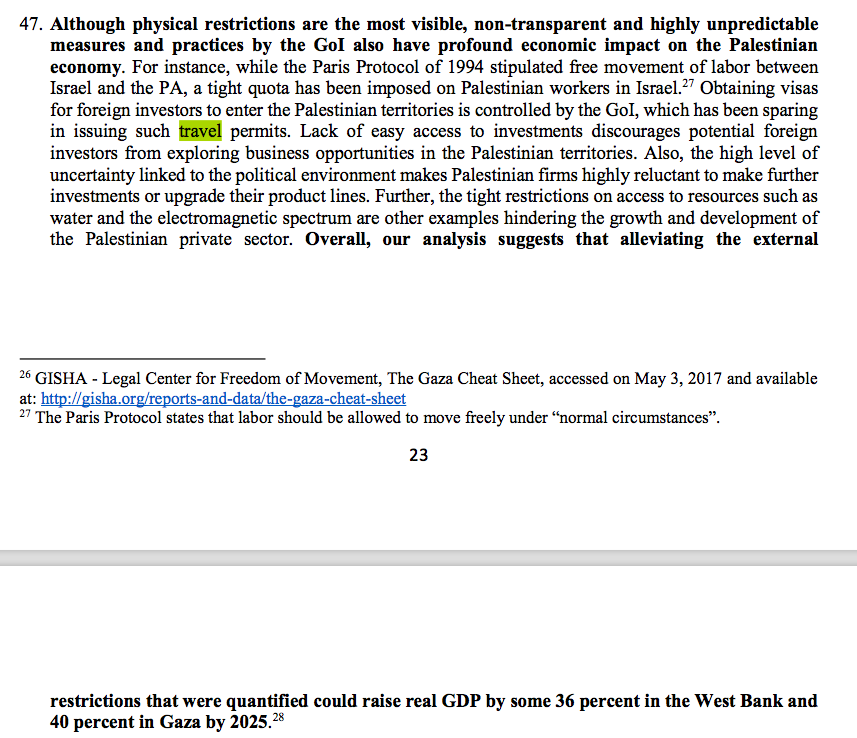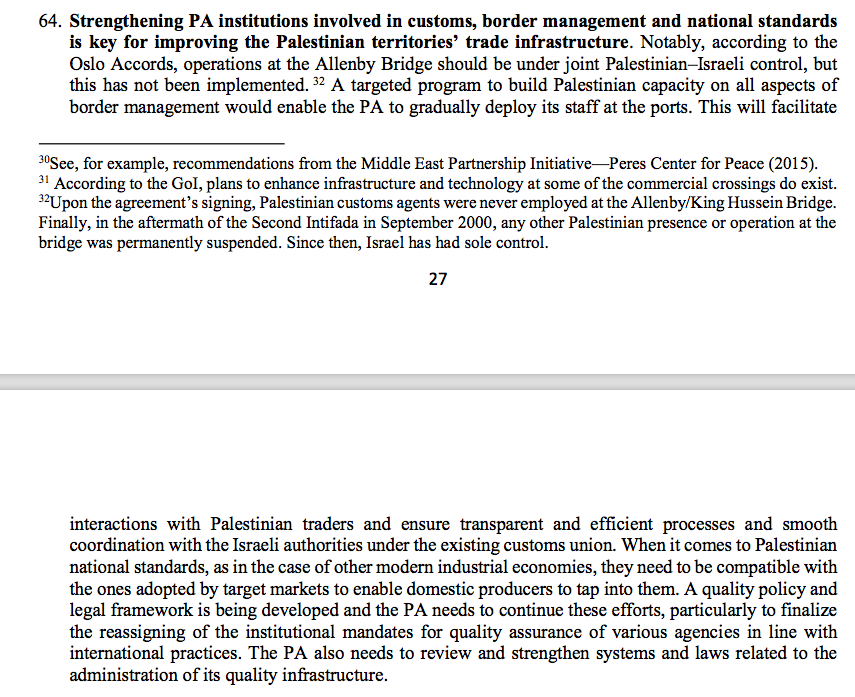
19 Sep, 2017
World Bank: Enabling tourism could help lift Palestinian economic growth to 7%
JERUSALEM, September 12, 2017 (World Bank press release) – The World Bank released a report today that calls for a new vision for the Palestinian economy that can lift growth to an average of 7 percent per year. While recognizing the critical importance of a political settlement, the report argues that measures over the medium term can create new areas of economic activity, attract private investment, generate jobs and significantly improve living standards.
“Increased investment and more jobs would lead to improved living standards. Without a real change in policies, the report predicts an annual growth of just 2-3 percent on average, less than the pace of the population growth. However, bold efforts could attract investment, create jobs, and reverse the declining trend and reshape the economy,” said Marina Wes, World Bank Country Director for West Bank and Gaza.
The report uses an economic model of a ten-year time frame to estimate the impact on the Palestinian economy of addressing the constraints. By 2025, the economic and social payoff would be immense, translating into an annual growth rate of 6 percent in the West Bank and 8 percent in Gaza, resulting in the creation of 50 thousand jobs in the West Bank and 60 thousand in Gaza.

Going forward, growth and job creation will need to be driven by the private sector. For this to happen, the Government of Israel, the Palestinian Authority and the international community must create and support a better enabling environment for doing business. The report urges the parties to act in the following areas which have a large potential to uplift investment and growth:
- Improve and streamline Israeli procedures at border crossings: the average trade costs per transaction for a Palestinian firm are nearly three times as high as for an Israeli firm, and nearly four times the average duration of the import process.
- Review the dual use list (goods with both civilian and military uses): the list can be made more specific and easily identifiable for Palestinian traders to access needed inputs and know which goods need special licensing.
- Remove Israeli restrictions on access to Area C: this would enable Palestinian businesses to take advantage of the only contiguous territory in the West Bank and its comparative advantages in agriculture, mining and quarrying, and tourism.
- Lift the blockade on Gaza: this would open it up for critical trade needed to rebuild its infrastructure and economy and to improve the present very poor living standards of its people.
Alleviating these external restrictions could increase the size of the economy by 36 percent in the West Bank and 40 percent in Gaza by 2025. On the domestic front, priorities include:
- Reform the business regulation and licensing arrangements that influence the cost of doing business in the Palestinian territories.
- Invest in vocational training to bridge the skill gap in the labor market and accelerate land registration to release much more of this resource into the economic space.
- Strengthen governance and fiscal reforms to enable a well-functioning economy. This includes rationalizing employment in the public sector, improving tax collection, and freeing resources to provide adequate infrastructure and improved pubic services.
Alleviating the internal constraints could achieve cumulative growth of 24 percent in the West Bank, and an even higher 30 percent in Gaza by 2025. Donors can play an important role by committing to a systematic approach to address the underlying constraints and enable the private sector to flourish and become the real engine of sustainable growth.
“If parties show serious commitments, the prospects are promising in the medium term. The report warns that failing to address the worsening jobs crisis will exacerbate the already high youth unemployment rate of 42 percent. Inaction would lead to almost half of the Gazan labor force out of work by 2025. An unemployed population is a recipe for discontent, frustration and worse. This is in no one’s interest,” added Wes.
The World Bank report will be presented to the Ad Hoc Liaison committee (AHLC) on September 18, in New York, a policy-level meeting for development assistance to the Palestinian people.
Excerpts from the report:

+++++++++++




Liked this article? Share it!